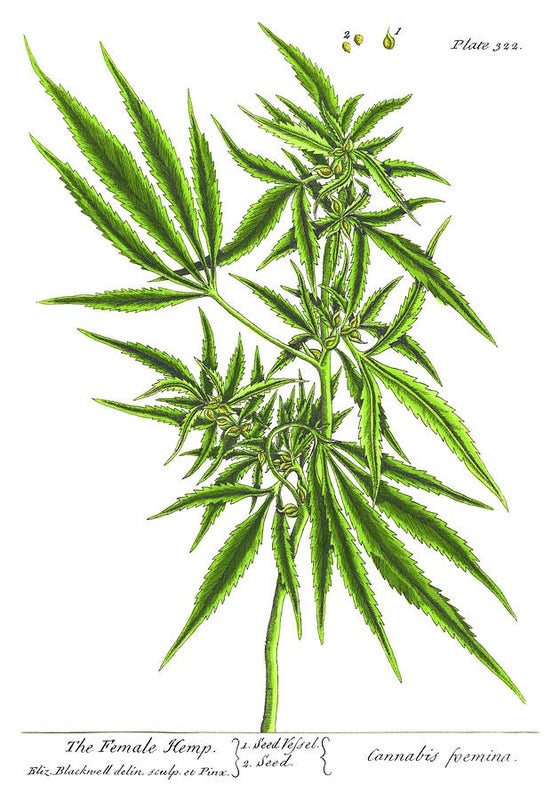Cannabis 101
The Evolution of Indica and Sativa
By now, you have likely seen the terms Sativa, Indica and Hybrid. Conventional wisdom is that Sativa offers uplifting and euphoric feelings. Indica’s, on the other hand, calm and sedate you. This earned Indica’s the monicker In-di-couch. Hybrid, well you guessed it, is a hybrid of an Indica and Sativa, usually capturing the best of both worlds.
For the longest time, the standard was if you wanted a more relaxing physical high, you’d choose an Indica strain. If you wanted to feel uplifted, you’d choose Sativa.
Today, the labels of Sativa vs Indica are mostly used by cannabis manufacturers as signifiers. They serve as a sort of guide for consumers who choose their cannabis products based on their desired high. That said, some argue these names do more to confuse people than as accurate descriptions of effects.
When people first started using recreational cannabis, there could still be a clear line drawn from a plant’s Indica or Sativa origin. Now, different types of cannabis have been crossbred countless times, and their extensive crossbreeding has significantly impacted the genetics of modern strains.

Diversification of Genetics
A grower might have started with a pure Indica, say a Hindu Kush. However, when they decided to breed that strain, they may have selected flowers that present more typical Sativa traits and crossed them with another Sativa dominant phenotype. Over time, the Indica traits will disappear and the strain will effectively become a Sativa.
When we ingest or consume cannabis, its terpenes and cannabinoids interact with our cells, producing varying effects. These effects depend on the types of terpenes and the cannabinoid content the strain has. For example, Sativa has more terpenes that invigorate such as limonene as well as pinene. Indica, on the other hand, has more terpenes that produce relaxing effects like myrcene.
As more and more genetics and strains are introduced to the market, the idea of classifying with three categories is under more scrutiny. New research continues to come out that further suggests there is far more at play in regards to effect than if the strain is traditionally classified as a Sativa or Indica. Terpene profile, entourage effect, THC/CBD, and other cannabinoid content/ ratios and physiological/ psychological state before consumption all play huge roles in the effects of weed.
Origins of Sativa vs Indica
If what we have now are mostly Hybrids, are there still pure Indica or pure Sativa? Yes, definitely! But these pure Indica and Sativa strains may be harder and rarer to find.
To better understand how we got here, it is necessary to look at the history of ‘landrace strains’, the original Indicas and Sativas.
Cannabis Sativa’s origin can be traced back to Ancient China, where it was cultivated and widely used for its fiber, seeds, and medicinal properties. Coastal farmers from China brought the plant to Korea and the rest of Southeast Asia. From Asia, travelers carried the plant to the Middle East, Europe, Africa, South America, and finally North America where the plant thrived in warmer regions.
It was in 1753 that this particular species of cannabis was classified as Cannabis Sativa by a Swedish botanist, Carl Linnaeus.
The origins of Indica, on the other hand, can be traced back to the Indian subcontinent where it thrived in the Hindu Kush mountain range. This is an immense mountain range that crosses several countries such as India, Nepal, Pakistan, Afghanistan, Bangladesh, and China. This species of cannabis can also be found in Tibet. Similar to Cannabis Sativa, Cannabis Indica also crossed borders via travelers until it reached the western countries.
In 1785, Cannabis Indica was classified by a Jean-Baptiste Lamarck, a French botanist. He noted that Cannabis Indica has different features compared to Cannabis Sativa. Sativas were typically tall, thin, and had narrow leaves, while Indicas were short, stout, and had broad leaves.
Strain Hunters
In the mid 20th century, breeders started searching the world for specific landrace strains, recognizing their potential for breeding new strains. These people were given the title strain hunters.

Two of the most famous strain hunters, recognized and celebrated around the world for their innovation and passion, came from Greenhouse seeds in Amsterdam, Netherland. Arjan Roskom and the late Franco Loja are responsible for traveling to some of the most remote places in the world in search of true Indica and Sativa strains. Greenhouse Seeds have a Youtube series where they document their Strainhunters as they travel the world, trying cannabis in different countries. The dedication of strain hunters to preserve and spread true landrace strains is directly responsible for some of the most adored and recognizable strains available today.
Franco Loja passed away in 2017 while in the Democratic Republic of Congo while he was researching the medical benefits of CBD on malaria patients. He subsequently contracted the deadly disease himself while there. Loja’s passion and dedication to cannabis and its benefits is beyond admirable and he is celebrated as a kind-hearted pioneer in the cannabis genetics field whose impact will be felt for many years to come.

No Longer a Clear Line between Sativa vs Indica
Because Sativa and Indica originated from vastly different regions, they have developed unique defense mechanisms well-suited to their respective native environments and natural predators. Terpenes, for example, produce aromas and flavors that ward off plant-eating insects but attract insect pollinators. Cannabinoids, on the other hand, not only help defend the plant against herbivores and the environment but also act as the plant’s natural pesticide. It protects cannabis against bacteria, fungus, germs, and other plant diseases and infections.
A plant’s terpenes and cannabinoid profile are, therefore, dependant on several variables that all affect taste, smell and affect. Similar to the ever-illusive mushroom amanita muscaria, the setting necessary for many of these unique strains to grow cannot be replicated in a lab.

Landrace strains grown and cultivated outside of their natural and native environments are called heirlooms, however, because they’re not in their native habitat. Heirloom strains also lose some of their distinctive and unique characteristics as they adapt to their new environment.
Human Intervention
Through a combination of nature’s incredible diversity and humans curiosity and ingenuity, countless Sativas and Indicas have been bred to create unique Hybrids. That said, our extensive crossbreeding has also unintentionally diluted the purity of the genetics of the original Indica and Sativa strains. This makes finding these true landrace strains rare and more difficult in the market.
Today, the labels Sativa vs Indica are mostly used to help consumers choose a cannabis product based on their mood and desired effects. They also help growers choose the type of cannabis to grow. For example, Sativa has a longer flowering cycle and grows well in warmer climates, while Indica has a shorter flowering cycle and thrives in colder regions.

How to Choose the Right Medical Cannabis Product
If you’re going to choose a strain based on its expected set of effects, you have to look past the labels and take a look at the strain’s cannabinoid and terpene profile. Research about the different types of strains and their respective phenotypes and look for reliable laboratory reports done on them. These laboratory reports list the cannabinoids and terpenes found in the strain as well as their potency or amount. They can already give you a good prediction of their effects.
As of this week, Leafly has created its own system for classifying and choosing strains, based on the intention to move away from the old categorization. The new system focuses on desired effects, terpenes, and cannabinoids.
Terpenes/ Cannabinoids > Name Recognition
So let’s say for example you’re looking for a strain that can help ease your pain, but also offers euphoria rather than the typical sedation found in Indica’s. Start by looking for strains that have high CBD and low THC content. Next, take a look at their typical terpene profile via laboratory reports posted online. While there is still some diversification, terpenes should remain consistent if it’s an authentic phenotype. Terpenes known to reduce pain include caryophyllene, linalool, myrcene, pinene, humulene, bisabolol, and eucalyptol and the pinene and limonene specifically will work to give you euphoria rather than sedation. We recommend Harlequin for its high CBD yet uplifting effects,
Alternatively, if you want a strain ideal for relaxation and loss of appetite but want to be able to focus on tasks rather than sedated, then you want high THC and low CBD. The low CBD will not negate the effects of the THC, however, what is most important is the terpene profile. It won’t do you any good to choose a strain based on its label alone. Although conventionally people might think relaxation = all Indicas, many might offer what you’re trying to avoid. A strain that contains limonene, caryophyllene, and linalool would be far more suited for your needs than a more conventional Indica containing high amounts of sedating myrcene. We recommend Medibud for its incredible relaxing yet invigorating attributes.
Ask for Help
You can always ask our team here for strains perfect for your medical condition. If you find a strain that works for you, research it and be on the lookout for strains with a similar genetic makeup.
By knowing what to look for, you can narrow down your list until you find one that best suits your needs.
Final Thoughts
In these modern times, relying on whether a strain is officially an Indica, Sativa or Hybrid based on its original classification does not suffice. There is too much potential for genetic diversification to rely on what the original breeder claimed. Here at Just Cannabis, we recognize and treat these classifications as identifiers, based on our research, available terpene information and our combined experience to help you find the strain right for you.
Nobody can tell you if what you are getting is a true Indica or Sativa, so instead, we use those terms to help you narrow down strains based on the expected effects designated to each classifier respectively. These two different cannabis types have been crossbred for many decades that they have lost some of their unique and distinguishing features. Instead, do your research on the different strains and know the potency of their cannabinoid and terpene contents. Only then can you choose the best strain suited for your symptoms.









